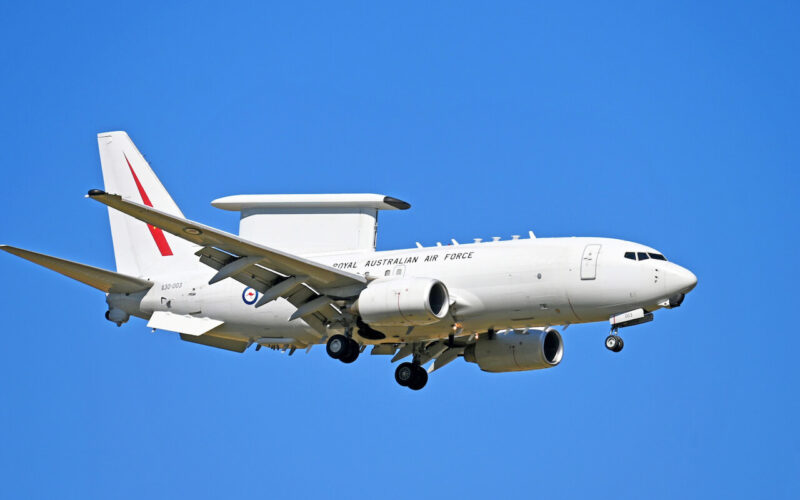Members of the British Royal Air Force and the US Air Force are currently at the Royal Australian Air Force (RAAF) bases in Darwin and Tindal in Northern Australia for a multinational air combat exercise.
Part of the exercise is training on the Boeing E-7A Wedgetail Airborne Early Warning and Control aircraft, which was developed by the RAAF.
F-35s from USMC and Royal Australian Air Force join a RAAF E-7A Wedgetail for capabilities demonstration at RAAF Base Tindal, Northern Territory.
credit Down Under Aviation News pic.twitter.com/5BtWSYXP0Q— Chris Bolton (@CcibChris) September 7, 2022
What is the Boeing E-7A Wedgetail?
The E-7A Wedgetail is a force multiplier with long-range surveillance and communications capabilities. The aircraft has participated in operations both domestically and internationally since its introduction into RAAF and regularly supports single service, joint and allied exercise training activities. (source: RAAF)
Defense News reported that the US and British air forces have ongoing acquisition programs to purchase the E-7A, which is based on a commercial Boeing 737 airliner and fitted with a Northrop Grumman multi-role electronically scanned array radar on a fairing on top of its fuselage.
E-3 Sentry vs E-7A Wedgetail
Air Battle Manager Maj. Christopher Dunn of the United States Air Force told Defense News that the transition to the Wedgetail E-7A from the current Boeing E-3 Sentry was relatively seamless due to the similarity in user interfaces on both platforms.
Dunn, who is on a three-year tour with the Australian air service, explained that the main benefits of the Wedgetail E-7A were the modern, electronically scanned array radar and communications suite and the improved reliability of the newer airframe.

